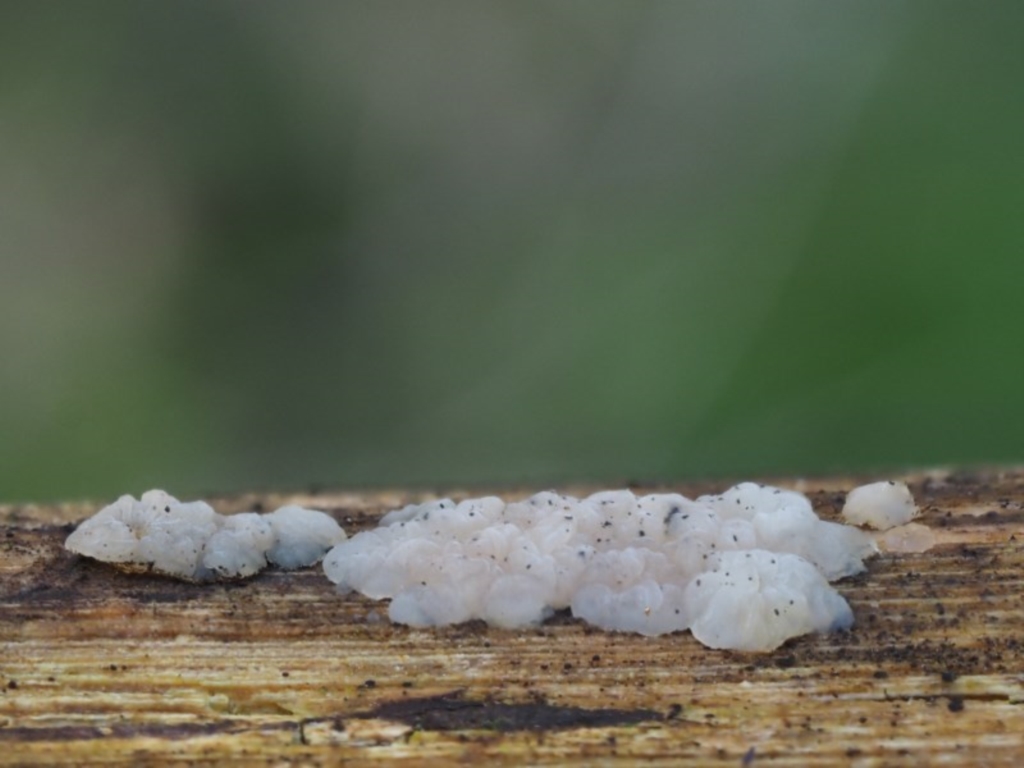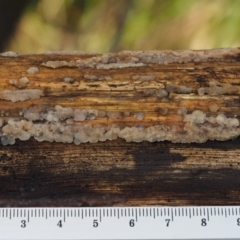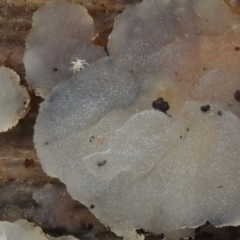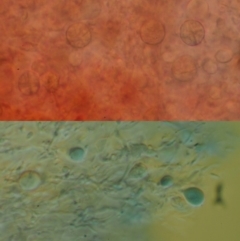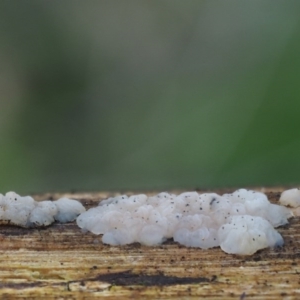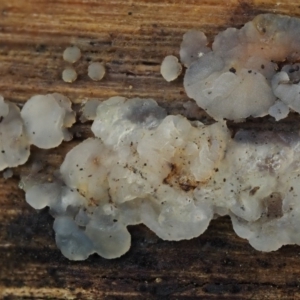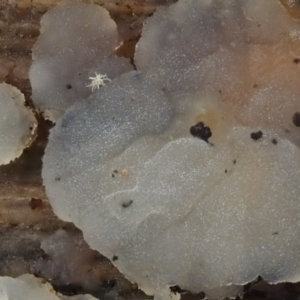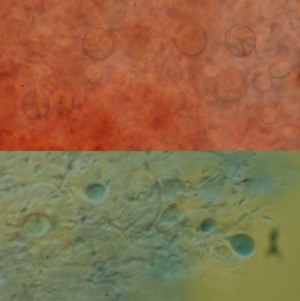Cotter River, ACT
Identification history
| Gelatinous, on wood – genus uncertain | 5 Sep 2016 | Heino | ||
| Physalacria | 22 Aug 2016 | KenT |
Identify this sighting
Please Login or Register to identify this sighting.
User's notes
Extensive fruit body production over the upper surface of a fallen log
4 comments
Heino
wrote:
23 Aug 2016
Physalacria fruitbodies consist of hollow heads atop stems. These fruitbodies appear to be stem-less blobs, which makes me think of Tremella or Exidia, and I suppose there could be other candidates, but from the photo I can go no further. I know that sometimes an abundance of small white apothecia, growing crowded and distorted, can produce a Tremella-like effect, but since you suggested Physalacria I'm assuming there was no mass discoid growth here.
KenT
wrote:
29 Aug 2016
OK, I've now gone back three weeks later and had a look at this and it looked no different. I've removed a small amount of material to mount on a couple of microscope slides, an image from an ammoniacal congo red mount and another from a lactophenol cotton blue mount. I could see no evidence of basidia or clamp connections nor could I see any asci. Instead this looks like a conidial fungus with globose spores being produced at the ends of individual hyphae, anyway I don't know what it is and it may have to remain a mystery.
Heino
wrote:
3 Sep 2016
Ken, thanks for the micro-photos. They definitely show this fungus to be a basidiomycete, one of those with Tremella-type basidia. Such basidia are often sub-globose, usually tapering a bit towards their bases and with two internal cross-walls, at right angles to each other and each extending the length of the basidium. When you see such a basidium head-on you get what I call the 'hot-cross-bun' look, a circle around two lines at right angles to each other. In the red photo you see a few such circles with crosses. Unfortunately such Tremella-type basidia are found in a number of genera. Clamp connections are not present in all these gelatinous basidiomycetes and, when present, can be small and sometimes a pain to find. These basidia may still be fairly immature because I see no signs of the hypha-like pseudo-sterigmata emerging from the basidial apices. It would be a shame to lose good photo such as these so I might create some sort of Heterobasidiomycete category on Canberra Nature Map for unidentifiable jellies etc. More are undoubtedly going to turn up.
KenT
wrote:
4 Sep 2016
Thanks Heino, I don't remember putting one of this group under a microscope before, the lack of any obvious basidiospores and pseudo-sterigmata confused me completely.
Please Login or Register to comment.
Nearby sightings
Location information
- Coordinates 148.867000-35.344111
- Maps Lower Cotter Catchment
- Places Cotter River, ACT
Sighting information
- 1,001 - 10,000 Abundance
- 5 Aug 2016 01:33 PM Recorded on
- KenT Recorded by
Species information
- Gelatinous, on wood – genus uncertain Scientific name
- Common name
- Not Sensitive
- Local native
- Non-Invasive
- Up to 966.3m Recorded at altitude
- Machine learning
